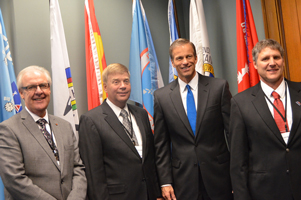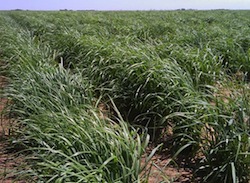As reported by Platts, the U.S. Environmental Protection Agency has approved Florida’s and North Carolina’s requests to allow certain counties to continue using 9 RVP gasoline through the summer season (or known as the traditional VOC reduction season). As it relates to ethanol, this allows these counties to blend E15 (15 percent ethanol, 85 percent gasoline) throughout the summer. Last year, states including Iowa were unable to sell the E15 blend due to VOC requirements.
 EPA Gina McCarthy signed the unofficial document on March 19, 2014 and has submitted the document for publication in the Federal Register. The EPA regulates gasoline volatility, measured by Reid Vapor pressure during the “summer season” from June 1 through September 15. Platts reports that for refiners and terminals, this period shifts from May 1 through September 15.
EPA Gina McCarthy signed the unofficial document on March 19, 2014 and has submitted the document for publication in the Federal Register. The EPA regulates gasoline volatility, measured by Reid Vapor pressure during the “summer season” from June 1 through September 15. Platts reports that for refiners and terminals, this period shifts from May 1 through September 15.
The counties approved for the 9 RVP gasoline include Raleigh-Durham-Chapel Hill and Greensboro-Winston-Salem-High Point areas in North Carolina and Broward, Dale, Duval, Hillsborough, Palm Beach and Penella, all counties in and around Miami, Florida. Prior to the approval, these counties were only approved to use 7.8 RVP gasoline during this time frame.
Platts reports the rule is expected to go into effect without future notice unless the EPA receives negative comments within 30 days of the rules publication in the Federal Register.
It should be noted that this ruling, once in effect, could encourage other counties or states to also submit requests to the EPA for approval to sell the 9 RVP gasoline during the June 1 – September 25 time frame as a means to be approved to legally sell E15 year round to vehicles and light duty trucks manufactured in 2001 or later.












